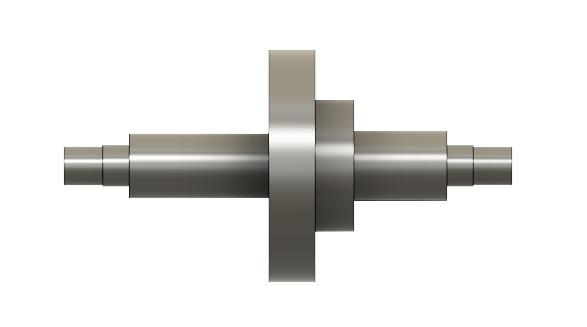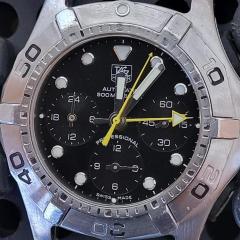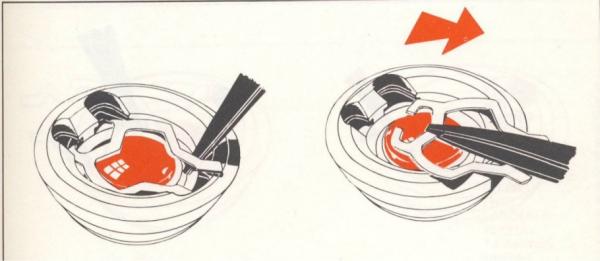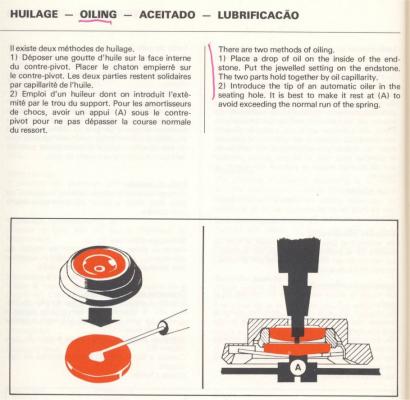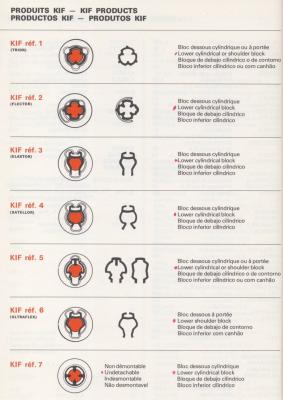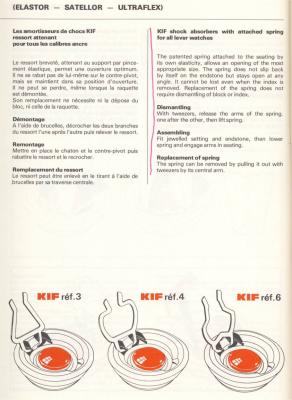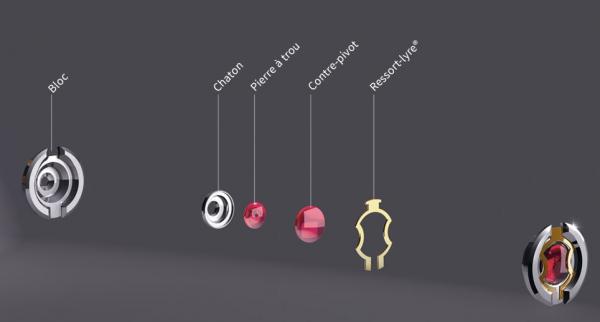Leaderboard
Popular Content
Showing content with the highest reputation on 09/05/23 in Posts
-
6 points
-
It is a Breguet hairspring. What you see is no touching but the coil in 2nd level (over main level). It needs to be centered without balance wheel, hairspring mounted in cock. However surely not recommended for unexperienced repairers! Frank5 points
-
Tressa Automatic 1970s ETA 2788 Running at 0 to +0.5 SPD in wear. Replaced crystal, crown (original crown worn and too small to wind effectively) and day wheel (plastic had gone very crumbly on the underside). Also badly chipped jewel on train wheel bridge (replaced entire bridge as easier than changing the jewel). Very good movement running at over 300 degrees DU/DD. All positions 0 SPD except PR, PU +2 SPD.5 points
-
4 points
-
2 points
-
I just bought this watch as, I like the look of it, it has an interesting movement with balance bridge, and it was cheap The movement is Smiths Ingersoll cal 627. The dial says "Made in Great Britain" - which usually means a Swiss movement. If it was a Smiths movement it would be "Made in England". But, I can find no info at all on this movement - I tried the identification in Ranfft. I haven't looked on the dial side yet. Any ideas what it is ?1 point
-
Try gluing the flat end of a screwdriver blade to it. May not work but worth a try.1 point
-
From the picture, I am not even sure if its a free sprung. Young men, need to borrow your eyes. The lower level is actually a flat H/S, and no different aproach needed to shape it concentric either. Shape the upper level so when you fit the stud into the stud holder, it wouldn't push or pull the main level out of level or flat. You'd be adjusting the height, sometimes you can adjust the height by high/lowering the stud in stud hole, that is trying to avoid unneccessary bending of the hairspring.1 point
-
1 point
-
Take the balance wheel off from the balance bridge. And look again. Is he centred, is he flat, and work from that point onwards on the spring. But first I would correct the bend you showed on the picture to perfection again. All withe balance removed from the bridge. Do not remove the spring from the balance itself.1 point
-
I checked the strength against the fork in the donor movement, and there was a very obvious difference. I tried picking up the "L" case back wrench as suggested by Bulova, and only the donor fork would lift the handle. Put the donor fork in the movement, got the train together, got the fingers against the index wheel, applied power and bam, started right up at 1.35v with no tapping. Such a fascinating movement! Got the calendar works together last night, now on to cleaning up the case and sourcing a bracelet. The case is pretty beat up and may be an opportunity to learn buffing and plating, but for now I want to just get it cased up and work on my grandfather's 218. Pictures coming soon1 point
-
Hi Richard - small world indeed! The quick answer - I was contracted to work on some pressure valve maintenance here back in 1993, came back and forth once a year to help out and ended up being invited to stay on by the contractor, nice change from the UK/Middle East trips I was mainly doing (although they were great) as well as a stint in Canada and US (also great). In the end I became a permanent resident and now have a family here, my son 20 now works with me. He and I get back to the UK once a year for some football and to see friends and relatives. Regarding your question, honest answer I don't know, I never used a watch lathe. I was working on lathes a long time ago before CNC came in so am used to manual work, but I've no idea how my lathe is going to look or be equipped. All part of the fun! I've done plenty of rivet work but never worked with balance staff equipment either, I'm hoping my past experience gives me at least some kind of a head start but it'll be fun anyway! I'm sure there will be plenty of head scratching before it all comes together. Another question I would have which maybe OH is equipped to answer is what metal stock to use once I get set up, maybe thats for later, but I'll need to think about that and the appropriate tools for cutting it as well as a lathe. Also intrigued about making a lathe out of a Singer motor (per OH reply), plenty of old Singers here to buy at auction.1 point
-
1 point
-
Looks like you've got the 6 jewel version, nice. In regards to the alarm have you got the small piece of plastic (red in colour) which goes over the spring contact, like in my working version picture? It's likely shorting out hence the alarm not working. If not you could use a tiny piece of plastic bag and or tape to test it out.1 point
-
I temper to blue like the second from the left in your pic. If you are cutting it in that state, with the slide rest (I know you are using a Sherline), the tool has to be really sharp, and will need touching up frequently. The moment it gets the slightest bit dull, and there is any resistance to cutting, you work harden the surface further, causing the tool to dull further, and it's over. Cutting hardened and tempered steel is much easier with a handheld graver. For the tapers on the hub and roller diameter, trying to do it with full contact of an angled cutting tool is going to be next to impossible, especially for the roller diameter. With a regular watchmaker lathe it's no problem to angle the slide, but I know that's not an option on the Sherline. Even though I have a "normal" watchmaker lathe with a killer slide, I still cut these features by hand because it's just faster and and equally important- easier.1 point
-
Replace the spring. Windles clock oil is the best you can use, as far as I know they only make one type. Cutting springs down when the ends have broken is bad practice, for starters you shorten the spring so the spring might not do its job in having the length it needs to run the clock or work the strike. The spring is old so it will not work so well as a new one. Priory one, never heard of it in my days that is why I always used Horolene but I think they both do the same type of job. With Horolene make sure you have good ventilation.1 point
-
I picked up this 033 75 Timex automatic at an antiques fair this morning in a lot with 2 other watches. This one is completely original and other than the broken strap, in great condition. Some DNA that took about 20 minutes to clean up with rodico including a quick crystal touch up with polywatcn. It seems like it was worn for a bit and when the strap broke it was put in a drawer. Put a temp rubber strap on and for £8 can't really beat it. Runs OK on the timegraoher but probably can be adjusted...1 point
-
Ok, thanks for yoru feedback again. I think I found the problem. The automatic bridge itself is ever so slightly touching the balance.... to be precise the lower bridge. The upper bridge is fine and doesn't touch the seconds spring (which is brand new and ever so slightly lubricated on the contact point). If I install the bridge without all the wheels (upper and lower bridge combined; even without the rotor axle) , the amplitude still drops. See picture (where you see the exposed seconds spring). But if I install the upper bridge without the lower bridge, everything is fine. I'm not sure why, though. Maybe the piece itself is a bit bent (even though it looks fine). I ordered a replacement and hope that this will solve it. The tolerances must be ridiculously tiny (between the bridge and balance). I'll report back...1 point
-
You are on a roll, no stopping you now! Soon be bringing dumpster Rolex back to mint condition with car polish and an old toothbrush!1 point
-
On my wrist. This was the first watch on which a managed to do a full service. It was advertised as a 'Sekonda'. On arrival the dial displayed 'Quest'. The indexes were damaged. Non runner. The case is from the 'Quest'. The Slava 2427 movement is from the 'Quest'. The dial is as you can see, is from an automatic Sekonda. This is my 'wear most days watch'.1 point
-
As you have ordered a mainspring we will start with that, make sure the barrel is clean and lubricated, check thr barrel bearings for sideshake causing a miss lock and barrel teeth for wear , bent , or cracked, when spring fitted go from there1 point
-
3 meters is a standard bar length for automatic lathes. My main supplier will sell as little as a meter though, or cut a 3m bar into meter lengths or whatever. The longtime standard steel for watch parts is Sandvik 20AP, but that is getting phased out for alternatives that don't include lead (leaded steel is a mainstay for automatic lathe work due to vastly increased tool life). The above supplier Klein, developed their own alloy LAW 100X with Carpenter Steel, which is lead-free, and I find cuts just as well as 20AP and is very stable in heat treat. Otherwise back before I moved to Switzerland, I used good-old O1 tool steel for everything with no issues. Cheap and predictable. Man, I needed some larger diameter for a project earlier this year, and Klein wanted like 600 bucks for 1m of 25mm diameter! Found a European supplier of O1 and got a meter for 70 bucks. And I still have 970mm of it .1 point
-
From Frank's post I understand he heat treats his own steel prior to turning. I used to do that too. In school they do have you do a lot of hand turning from "blue" steel; but I find the rods available to be of questionable quality, both old stock Bergeon* and other that I have found and tried. Doing it yourself gives better results. *I had some old Bergeon steel that was so strange, like inconsistently hardened, that it would only turn ovals. One of my old students makes his living making components for other watchmakers, and he went back and forth and finally settled on pre heat treated steel he makes, and makes the staffs directly from that. He might have to touch up the lathe tool/s a time or two during the process, but he still takes about the same amount of time for a staff that I do. I often do batches of components, so being able to rely on a tool to make it through the batch is more important to me. Plus, I won't cut threads on blue steel (stems), or cut teeth (pinions), so everything gets a post-heat treat.1 point
-
If you have a hankering for one of Harrisons clocks, but you are short of the odd million, but you do have a few grand to spare, Comitti of London may be the place to go. Fascinating to see that there are still fusee clocks being built in this day and age.1 point
-
I make lots of turned parts from steel, from staffs and stems to pinions and barrel arbors and so forth. I do it all with the steel in its annealed state, then harden and temper. There is a risk of things warping in heat treat, but from experience it rarely happens. Also, regarding stems, threading hardened and tempered steel is a quick way to ruin an expensive (and hard to get now) die. All commercially made watch components are made from steel in the annealed state, then hardened and tempered. When making a staff I will blank it out using the slide rest, leaving the pivots unfinished (turned to length, but just slightly smaller in diameter than the next diameter), the rivet uncut, the back taper on the hub uncut, and the taper for the roller table uncut i.e. oversize- all the other diameters to size. After heat treat, chuck on the hub or roller diameter, finish the pivot freehand leaving 0.01mm for the Jacot, cut the rivet, finish the various diameters. Flip around and hold by the balance diameter, cut lower pivot, cut taper for roller table, and back taper on the hub, do finishing work. Stake to balance, finish pivot diameters in the Jacot, and finally finish the pivot ends in the lathe- I just find it faster and easier than using the lanterns on the Jacot. Done. For heat treating I also find using borax/boric acid (not exactly the same thing, but same function) or soap or even fancy stuff like Brownells anti-scale all tend to be somewhere between a pain in the rear to almost useless. I learned many years ago to use wood charcoal finely ground, in a tube, with the part down in there. Heat to bright orange and dump the whole lot into oil. I use old nitrous oxide or CO2 cartridges that have been cut open as the tube (welded to a rod). It's a little messy, and I keep a commercial espresso grinder just for grinding the charcoal, but the parts come out a clean grey and can go straight to tempering without further clean up aside from removing the oil. You can get finely ground charcoal powder from health food stores if you want to try and don't have a spare espresso grinder around, haha. The tube helps distribute the heat, which is a big help. No binding wire, no cleaning off borax, no burned in pits. Hardening Balance staff blanked out1 point
-
I can tell you its British made, so not a swiss movement. You can get them with calendar as well.1 point
-
What I can see is a new date ring glued over the original date ring. Unglue new ones and re-glue it at the right position. Date ring jumping is mechanically dependent and cannot be fine adjusted. Might be your movement is designed for 4 o’clock date instead for 3 o’clock. That can happened in China. Who cares...? Is cheap? Is. Dot.1 point
-
This is the best how to do it that i have found in all my research about ETA 2892 A2 along with the excellent video from Watch Repair Channel with a Dubois Depraz chronograph module attach to it,i believe it's very similar to my TAG Heuer Aquagraph caliber 60 --CN211A...i know that i'm not ready to work on my watch yet even with all the info that i got from the best but i will with time ,in the mean time i will practice on more easy watch and buy along all that i need to services my watch corectly.it will take time but i will get to it. i just want to thank you for sharing your knowlege and excellent work ...Thank you very much!1 point
-
One way, would be to wind the watch in dial down position and see if the rotor spins, then see if the rotor spins when the watch is turned towards a vertical position. If the rotor does 'helicopter' this might indicate the reverser(s) being shot or just gunked up, so you would do the same test when clean. If I receive a watch that hasn't been serviced in over 10 years, then the rotor bearing and reverser(s) will get replaced as standard, as they can't put up with working with no lubrication. If they are not completely shot after wearing for 10 years, then they will be in the near future. Another way would be to turn the auto module upside down and with the rotor attached, turn the ratchet driving wheel with a thin brass wire and see if the reverser(s) slip easily without much pressure being put on the driving wheel or the wire bending, indicating too much pressure is needed to make the reverser(s) slip. This emulates the movement being hand wound, thus the reverser(s) slipping. I know the service manual says to replace the reverser wheels, but they will wash and Lubeta V105 just fine, as long as there is not too much wear.1 point
-
This discussion almost looks like it should be of two separate sections too many things at the same time. Basically the escape wheel discussion should be in a separate section. So spring for holding in jewels aren't always meant to be removed. Then to add to the confusion if you look in the Bestfit book #111 there is a section on shock absorbers. So to help you out they have pictures of various types so you you can attempt to figure out what you have remember this catalog was done in 1961 they've added a few since then and there showing 84 different systems. So typically the spring is that do not come out are found in the gear train,, the escape wheel possibly other jewels and occasionally on really cheap balance wheels. So for these there left in place cleaned in place lubricated for the backside. The cleaning fluid will penetrate where it's supposed to go. If you have the misfortune of disassembling more than likely it's going to be an entire assembly if you can find it. So an older version of the Kif catalog can be found here unfortunately it doesn't have the starting part of the book so I've scanned in some of the images of mine. http://www.phfactor.net/wtf/KIF%20Tech%20Sheets/ So to identify what you have you look at the spring. Notice number 7 on the bottom there is no separate spring because it doesn’t come out. Then once you identify the number of the spring you’re looking for you to look at the cross reference which is interesting in that it’s a little different than most. You find the watch manufacturer you’re supposed to know which spring you have because it’s not listed by the model numbers by the spring number first then the model number. So casually trying to look for something is a lot harder if you don’t know what you’re looking for. Then as the discussion is for 3 I’ve attached the section on disassembling, assembling and replacement of the spring. Then yes the pictures make it look a lot easier than it is in real life. Then the section on lubrication. There’s two methods of doing this and for both methods I still recommend removing for cleaning. So the conventional dip oiler. Then if you have an automatic oiler the whole thing can be done assembled. Do not attempt to use a dip oiler when it’s assembled as you’ll never get the lubrication where it’s supposed to go. To understand this I’ve attached an image from the incabloc website found at the link below. The shock jewel assemblies are mounted in a Bloc which usually has a very small hole on the plate side. Then even if you somehow to get the oil past that hole the hole jewel is also in a setting that can also have a really small hole. http://www.incabloc.ch/en/systeme_incabloc.php Then too many watches in this discussion. For the Bulova a bit of a mystery I looked it up on one of the sites I look at and I get the information below indicating it's not a number three spring but it's number 6 and a different name. If you look in the PDF catalog it doesn't exist except it's supposed to be equivalent to a 11anac which does exist. It is possible we were variations which is why you need to identify by the spring shape which one it was. BUL 11ANACB 400/1364 SHOCK SPRING, UPPER/LOWER 6-1/KIF ULTRAFLEX 111F-112F/BUL 3AE ROL 3135 400/1375 SHOCK SPRING, UPPER/LOWER KIF 3-3/KIF ELASTOR1 point
-
What a disaster of a weekend! Strike 1) Finished working on a quartz Rotary, polished up the case, new crystal. Battery arrived via Amazon.... What could go wrong??? Thing just wouldn't work....... Strike 2) worked on a Sekonda, all going well, but rate was crazy high... Cleaned the balance, demagnatized...etc...turned the adjustment as low as it could go....still >+300 s/day, put to one side while I wait for inspiration! Strike 3) have a beautiful Tissot with a blue dial, serviced the movement and looking great. Was a front loader so installed the new crystal after the watch/dial/hans installed....crystal jumps out and huge gouge out of that dial, about 1cm long down to bare metal...wife comes to find out why I'm having a tantrum in the floor like a 3 year old at Tesco. Hopefully that's all my bad luck used up for September... Hopefully0 points



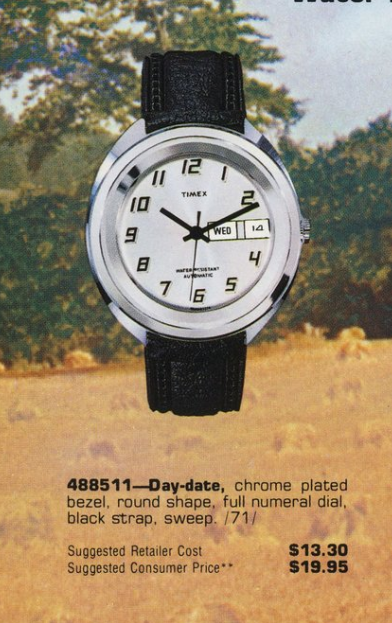
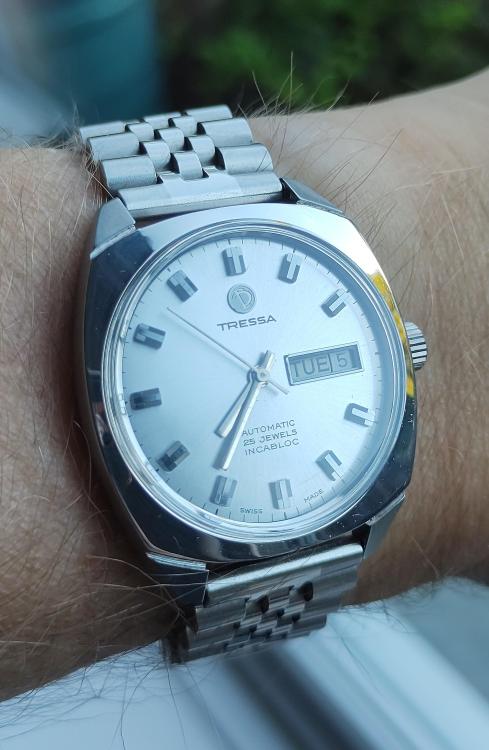
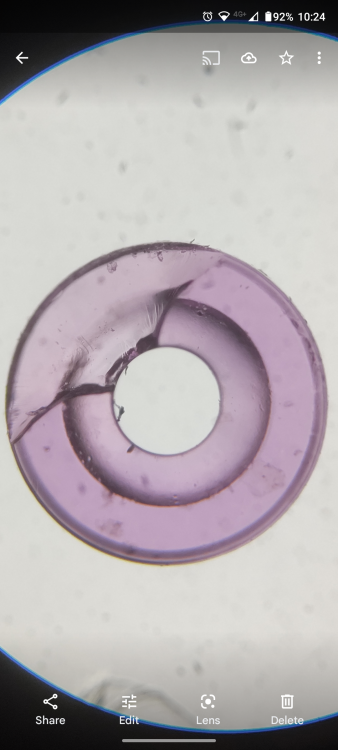
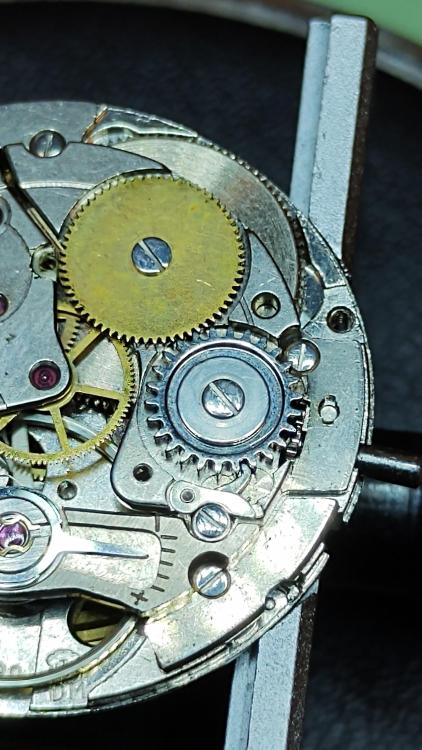
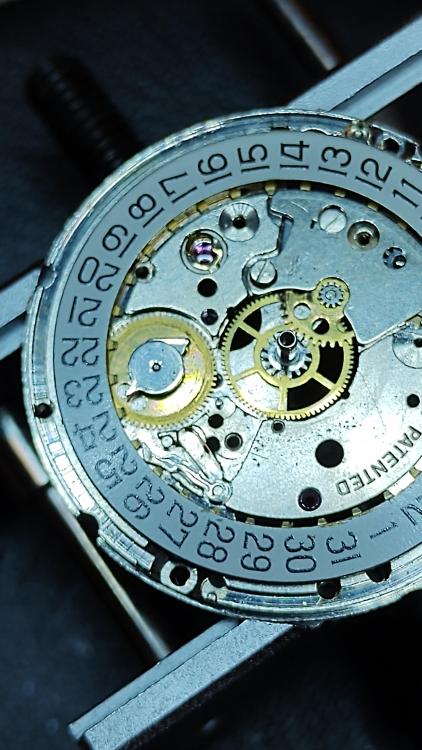
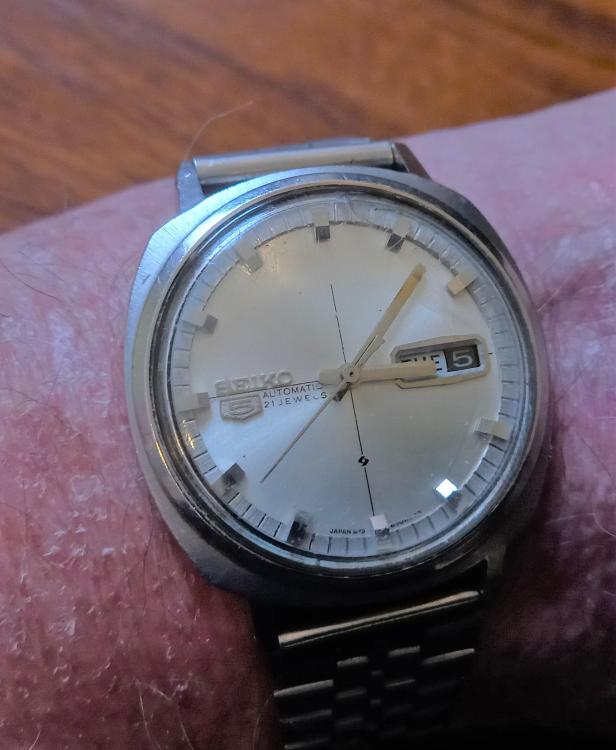

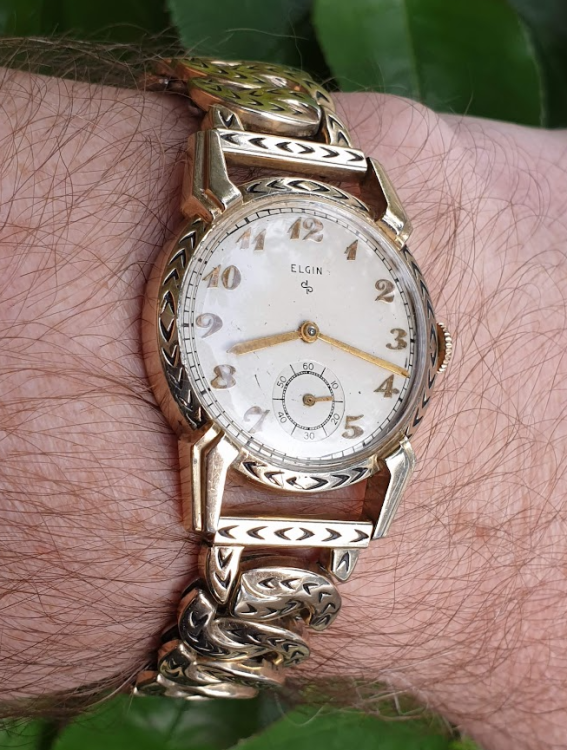

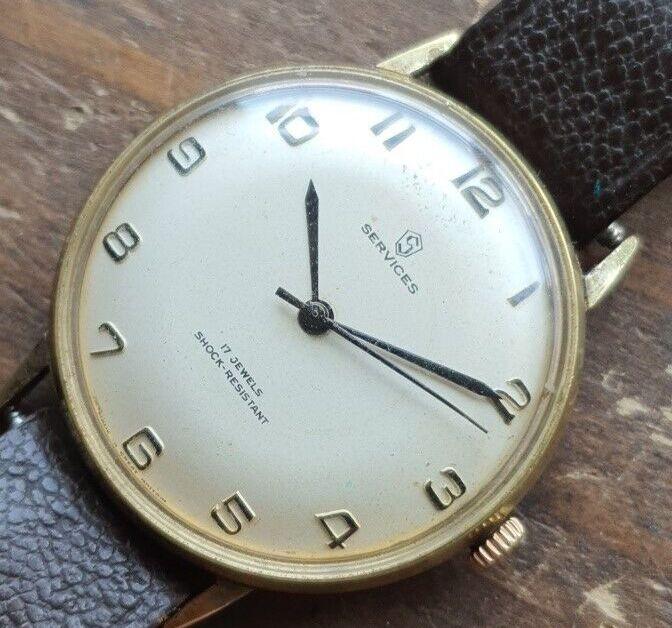
.thumb.jpg.ce6880ba8c1d59887644a7b2b1c45d7c.jpg)


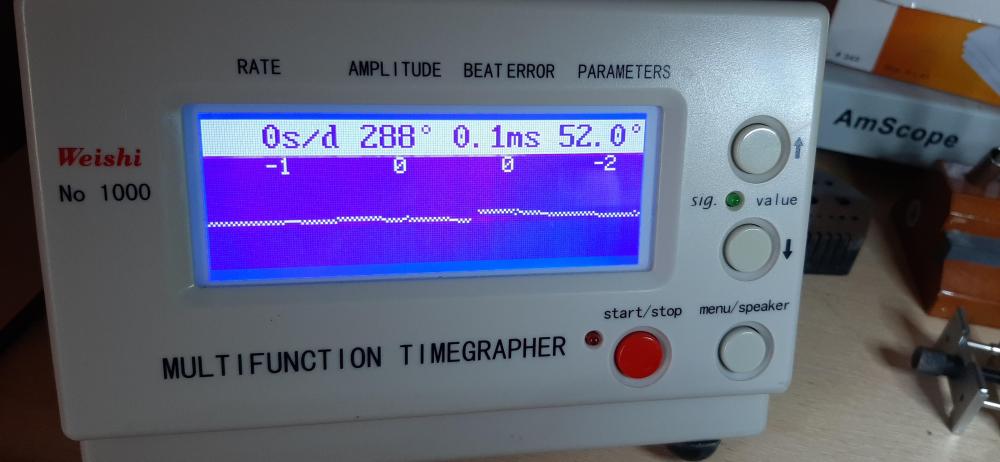




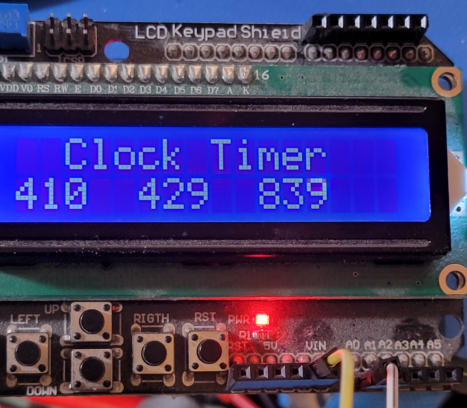
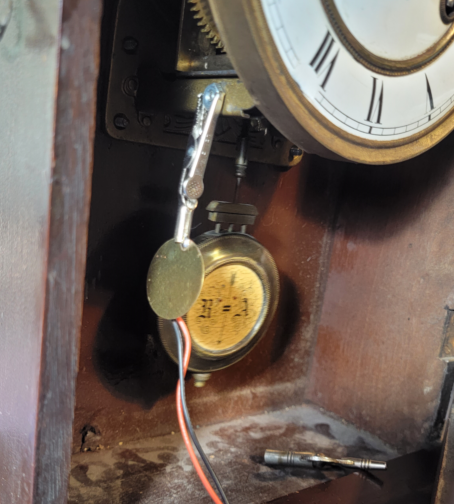
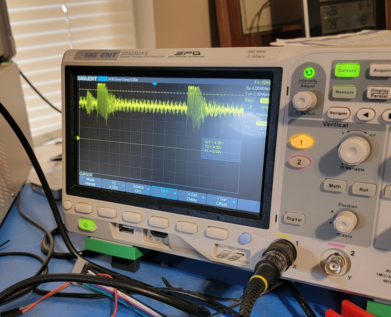
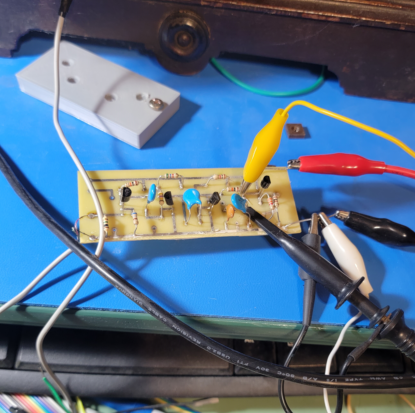


.thumb.jpg.cb17a66989f1e796fd4217db2e9ca9df.jpg)
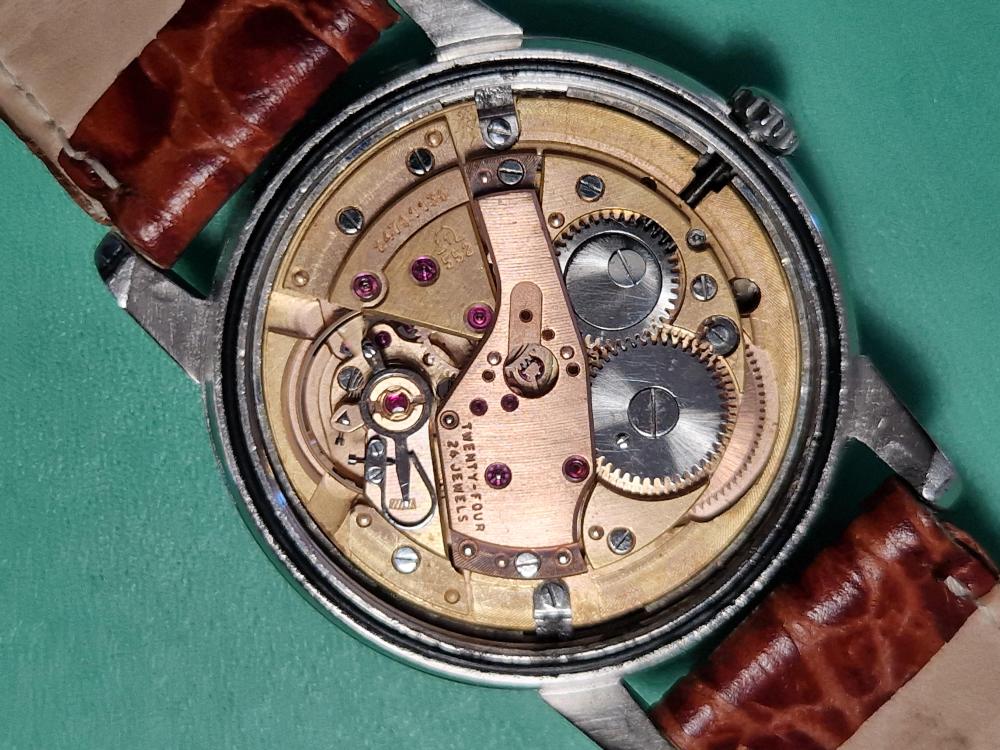

.thumb.jpg.60a30970b7ceed2a9e26e863021d78d0.jpg)

